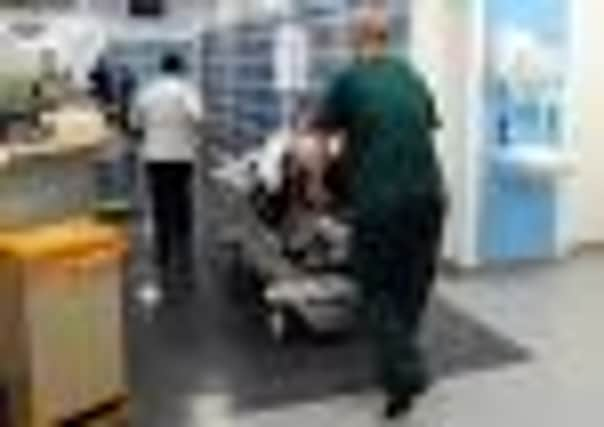Quick response targets for A&E units ‘not risky’


A study carried out by academics at Sheffield University has found that the target for NHS A&E units, which said that 98 per cent of patients must be seen, treated and have left the department within four hours, didn’t make services worse for patients.
By contrast, waiting times have actually increased since the Conservative-led Government scrapped the four-hour target.
Advertisement
Hide AdAdvertisement
Hide AdThe target was introduced in 2005 by the then-Labour government’s Department of Health, in response to lengthy waiting times, crowded waiting rooms and the compromised standards of care that resulted from overcrowding.
But the targets were then axed when the coalition Government came into power, with Health Secretary Andrew Lansley saying that he instead wanted to “deliver the best possible results for patients.” To this end, eight new indicators for care quality were introduced this month.
Labour’s targets were controversial when they were introduced six years ago, and provoked debate as to whether resources and standards of care would be affected due to A&E departments treating a higher volume of patients in a shorter space of time.
However, it has since been revealed that the number of patients waiting more than four hours for treatment in A&E departments has increased by 63 per cent since the four hour target was scrapped.
Advertisement
Hide AdAdvertisement
Hide AdStatistics show that an extra 73,000 patients were left to wait for more than four hours in the last three months of 2010, compared with the previous year.
Sheffield University’s new research, published today, reveals that the original four-hour target did not impact on patient care or resources, nor did it result in an increase in return visits to the A&E department or an increase in the number deaths.
The research was carried out by Professor Suzanne Mason from the university’s school of health and related research and Prof Ellen Weber, a visiting professor from the United States.
The pair have been invited to present their findings at the prestigious Society for Academic Emergency Medicine annual meeting in Boston, to take place in June.
Advertisement
Hide AdAdvertisement
Hide AdProf Mason pointed out that while Labour’s four-hour target may have been safe, there was no evidence to suggest that it led to higher quality patient care.
She said: “We cannot state that the target made care safer or of higher quality. However, based on the aspects of care we studied, we know that the target was no worse for patients.
“Admittedly, the resources put into the old target were huge, so we hope that the government’s new quality indicators can prove effective.”
Prof Weber, from the University of California, said the research carried out by Sheffield University was of international importance. She said: “Emergency department crowding is an international epidemic.
Advertisement
Hide AdAdvertisement
Hide Ad“It results to a large extent from the fact that patients who need hospital admission aren’t being moved from the emergency department to the ward in a timely fashion. So the problem can’t be fixed by emergency departments alone. The UK’s target offers important lessons for the US. In the US, hospitals have been unable – or unwilling – to fix the problem voluntarily.
The four-hour target in England forced hospitals and entire trusts to address this problem.
“Our data suggests that a mandate to limit the length of emergency department stays was safe for patients being discharged, with only a small impact on admissions and investigations.
“Now that the government has de-emphasised the target, emergency departments in England are already seeing increased waiting times –so some form of regulation may be necessary.”
Advertisement
Hide AdAdvertisement
Hide AdFigures released by the NHS Information Centre yesterday revealed that A&E patients in 2010 spent slightly longer in the department than those in 2009.
Of the 15.9 million A&E visits recorded in 2010, on average patients spent two hours and seven minutes in the department, compared to one hour 59 minutes in 2009.
The percentage of patients who left the department before being treated has remained stable at 3.4 per cent.
The chief executive of the NHS Information Centre, Tim Straughan, said: “Today’s report shows that patients spent a slightly longer time on average waiting to be assessed, treated and leaving from accident and emergency departments compared to the previous year.
“Over the coming months, more data will be published for 2011, allowing people to see if the average patient journey time through A&E changes over time.”